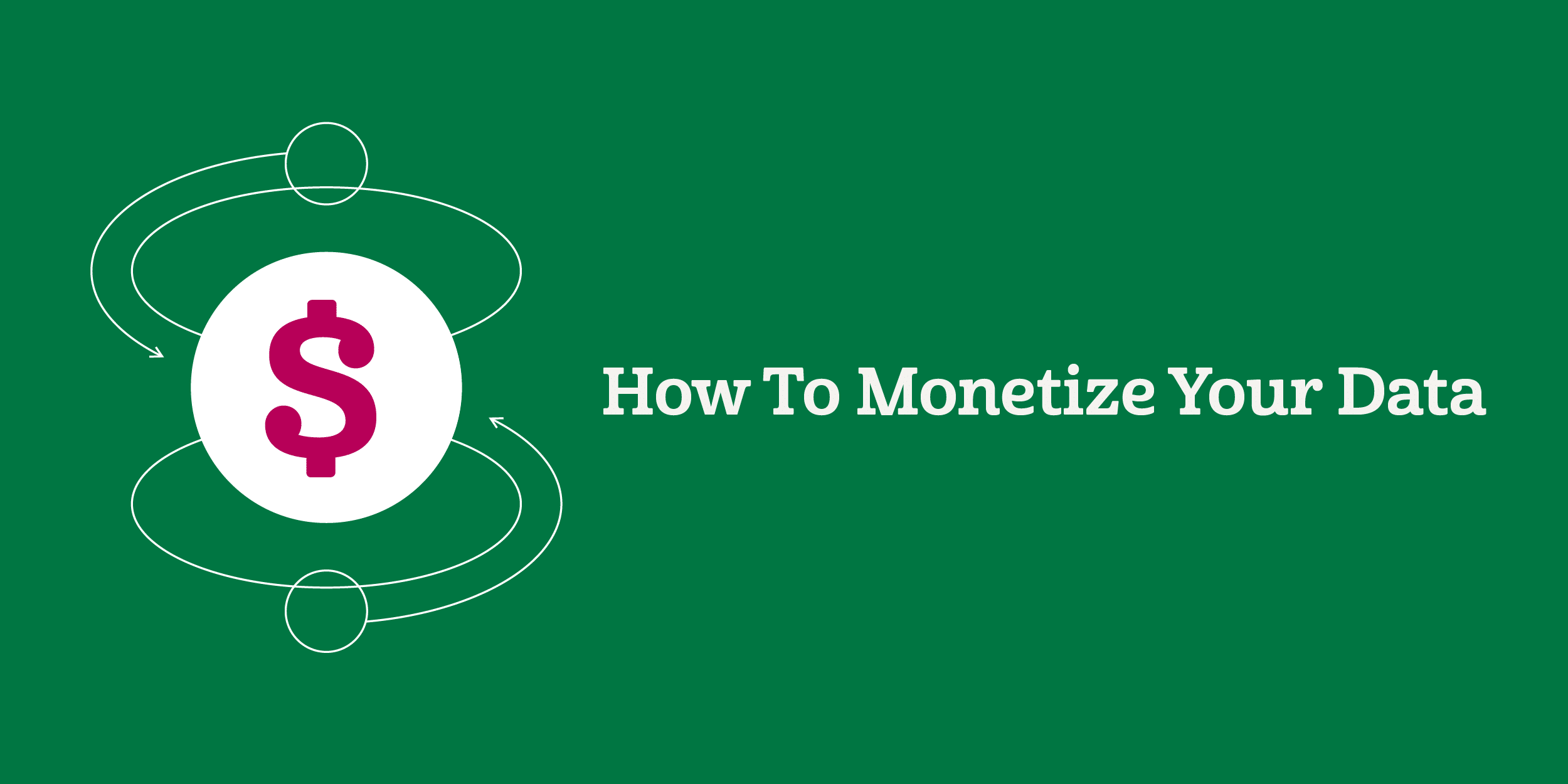
Data isn’t merely valuable to companies in an abstract sense. You can derive economic value from data, both directly — by selling your data — and indirectly — by using your data to boost your revenue and reduce your costs. So, how can you go about monetizing your data? Let’s explore this topic.
The Need for Data
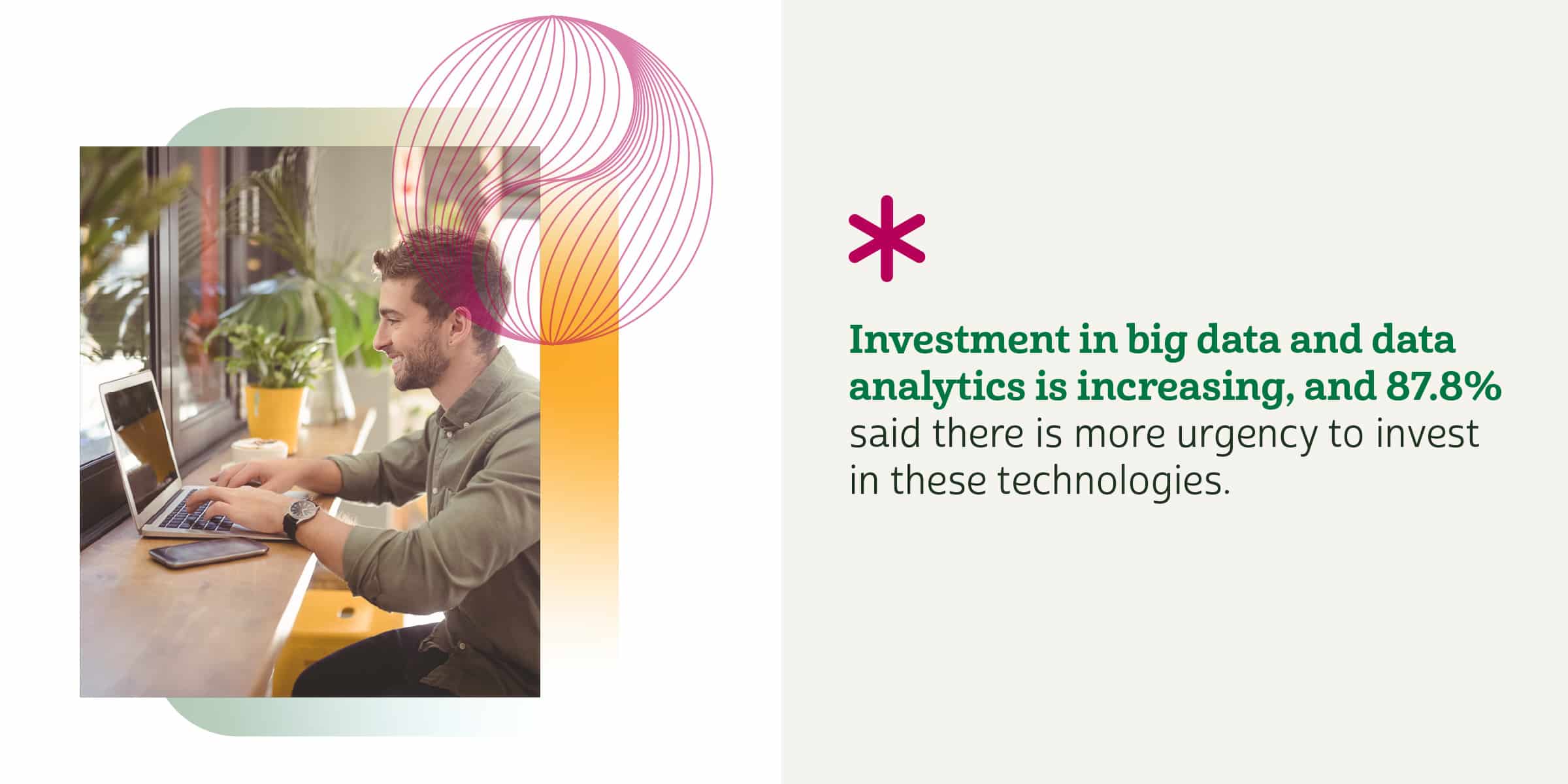
Accessing high-quality data is becoming increasingly important for marketers, agencies and all sorts of businesses. In a survey conducted by NewVantage Partners, 91.6% of executives said investment in big data and data analytics is increasing, and 87.8% said there is more urgency to invest in these technologies.
Big data use is proliferating so fast that it’s hard to keep track of its growth. It’s no longer just a good idea — now that so many businesses are using it, it’s become essential for keeping up with the competition. Data helps companies improve their customer experiences, reduce their costs, find new customers and much more. Taking advantage of data technologies can help companies keep up with — and lead — the competition in these crucial areas.
As the value of data increases along with the importance of taking advantage of the data opportunity, data collaboration platforms and advanced data analytics become more critical for businesses. There is also a growing number of ways for companies to use data monetization strategies.
The Value of Data
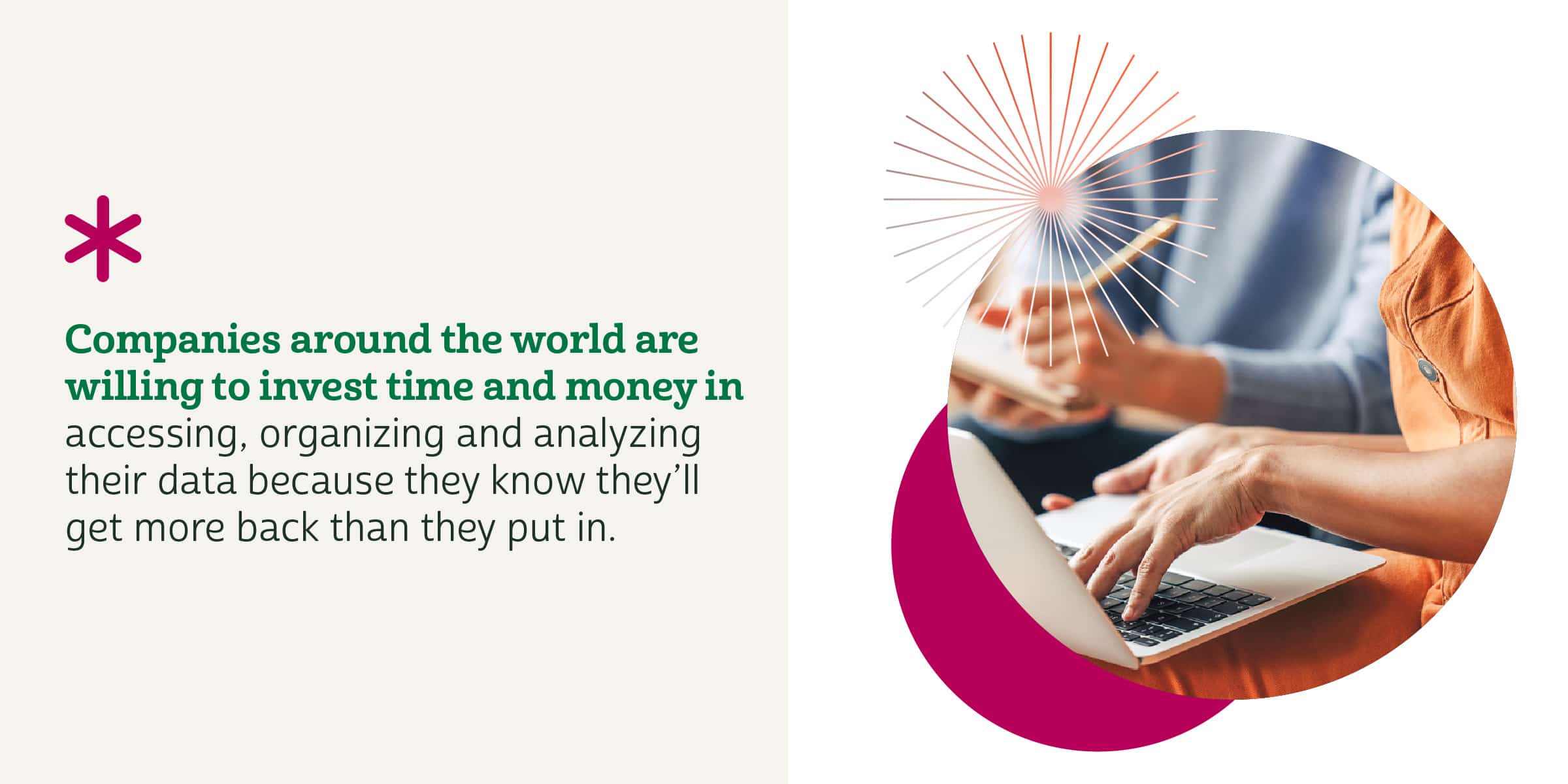
We know companies around the world in a vast range of industries believe data is valuable. They’re willing to invest time and money in accessing, organizing and analyzing their data because they know they’ll get more back than they put in. Data is revolutionizing many different aspects of businesses, but how?
What makes data so valuable is it provides you with the ability to:
1. Get to Know Your Customers Better
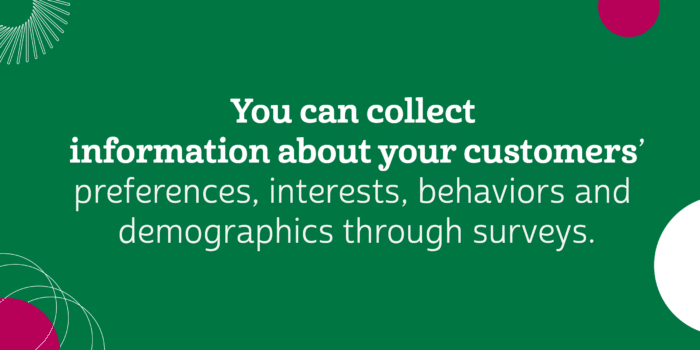
Data can help companies get to know their customers better. Because customers are at the center of any successful business, this is one of the most important uses of data for companies.
You can then use this customer data to better meet your customers’ needs and improve relationships. You can apply your enhanced customer knowledge in many different areas. You can, for example, create products and services that better match your customers’ expectations. You can create advertisements, social media posts and blog posts that better reflect your customers’ interests. If your data reveals customers who purchase a certain product often have a particular question, you can proactively answer that question for customers via a FAQ page, email or another method.
2. Make Better Decisions
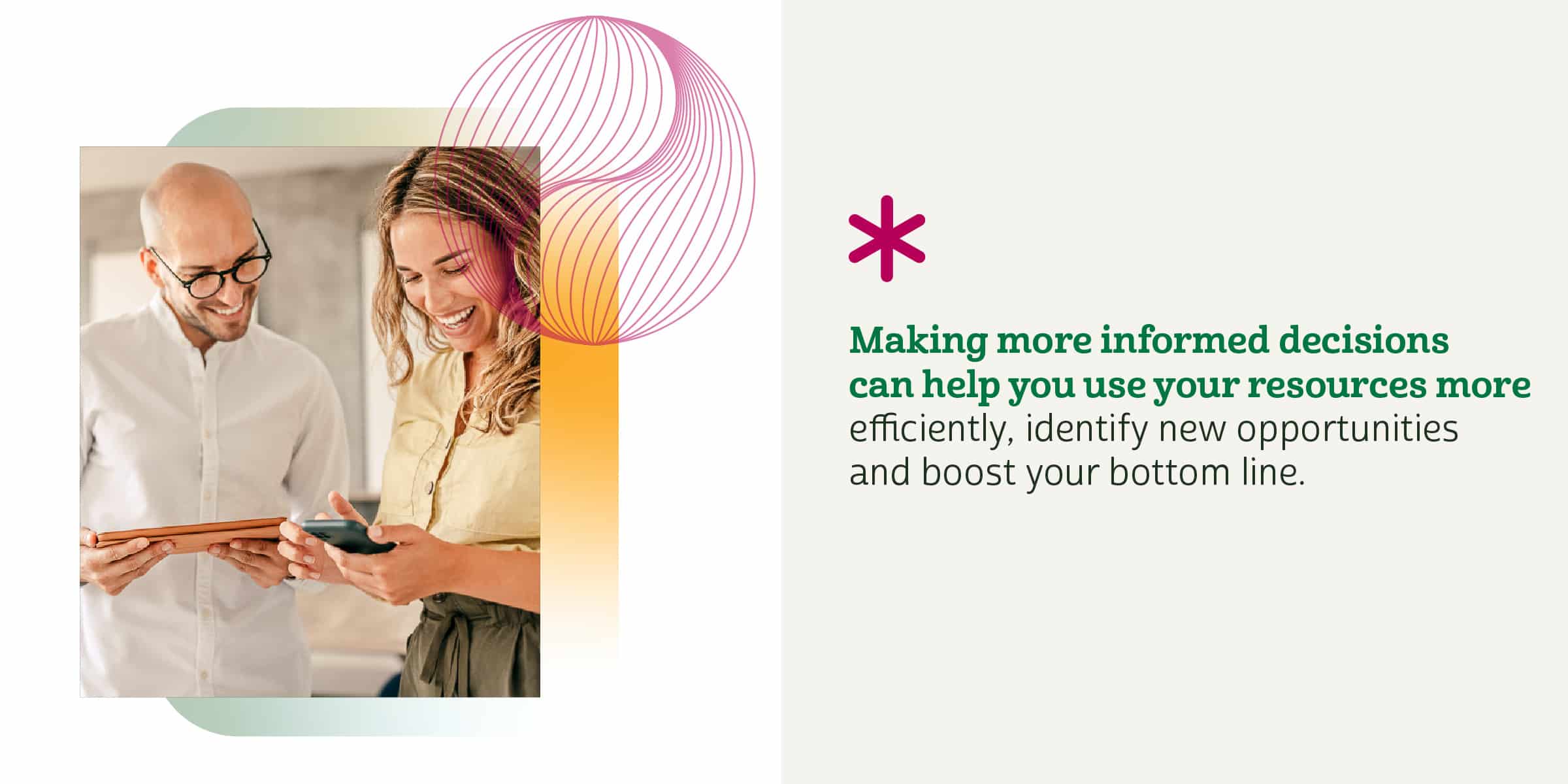
When you have more relevant and higher-quality information, you can make better decisions. You can include the information you learn about your customers in your analyses when making decisions related to advertisements, product development and other areas. Customer data can also help you make better decisions about a wide range of other areas, from hiring to new technologies to employee benefits programs. Making more informed decisions can help you use your resources more efficiently, identify new opportunities and boost your bottom line.
3. Evaluate Performance
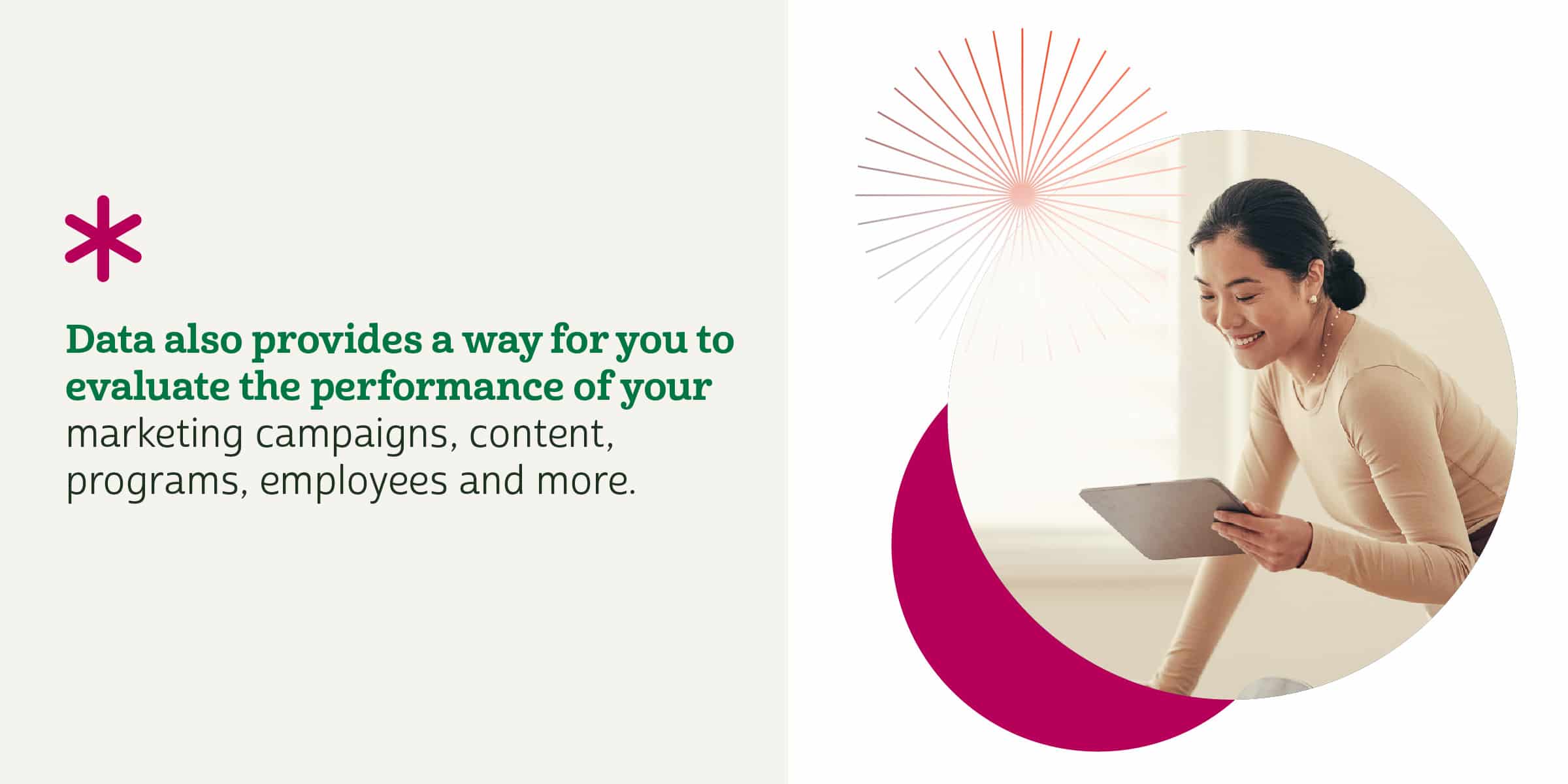
Data also provides a way for you to evaluate the performance of your marketing campaigns, content, programs, employees and more. Surface-level data, such as sales figures, will show you which products are performing best. A company may use their sales data, for instance, to decide which products to continue making and which to discontinue. A publisher may start creating more videos about a particular topic if the data shows the topic is popular with its site visitors.
You can also dive deeper using data analytics techniques. Doing so can give you insights into why certain products are performing better than others. With this information, you can avoid repeating mistakes when developing future products. You could also incorporate features from a successful product into a struggling product, potentially boosting its sales and saving you from having to discontinue it entirely.
4. Reduce Costs and Increase Efficiency
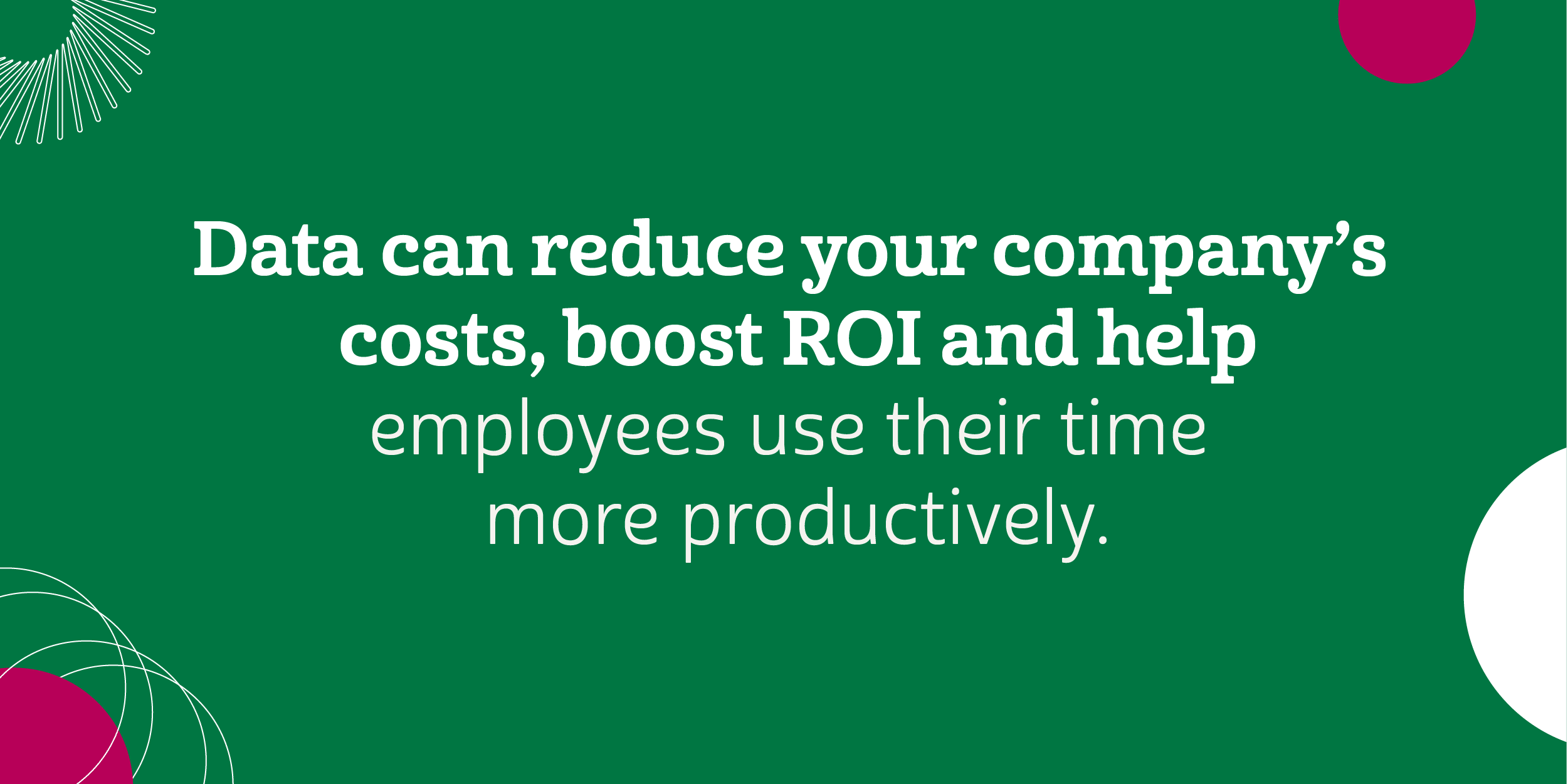
With data to inform your decision-making, you can use your time and money more efficiently. In this way, data can reduce your company’s costs, boost ROI and help employees use their time more productively.
For example, you can use data collaboration and data analytics technologies to analyze your audience data to determine which types of customers are most likely to respond to certain advertisements. When you target your ads more accurately, more people will respond and make a purchase, increasing the ROI of your campaign and reducing wasted advertising dollars.
You might also find, for example, a specific customer service employee is particularly successful at handling calls with angry customers. Once you discover this, you can work to determine the techniques the employee uses and encourage other representatives to use them as well.
What Is Data Monetization?
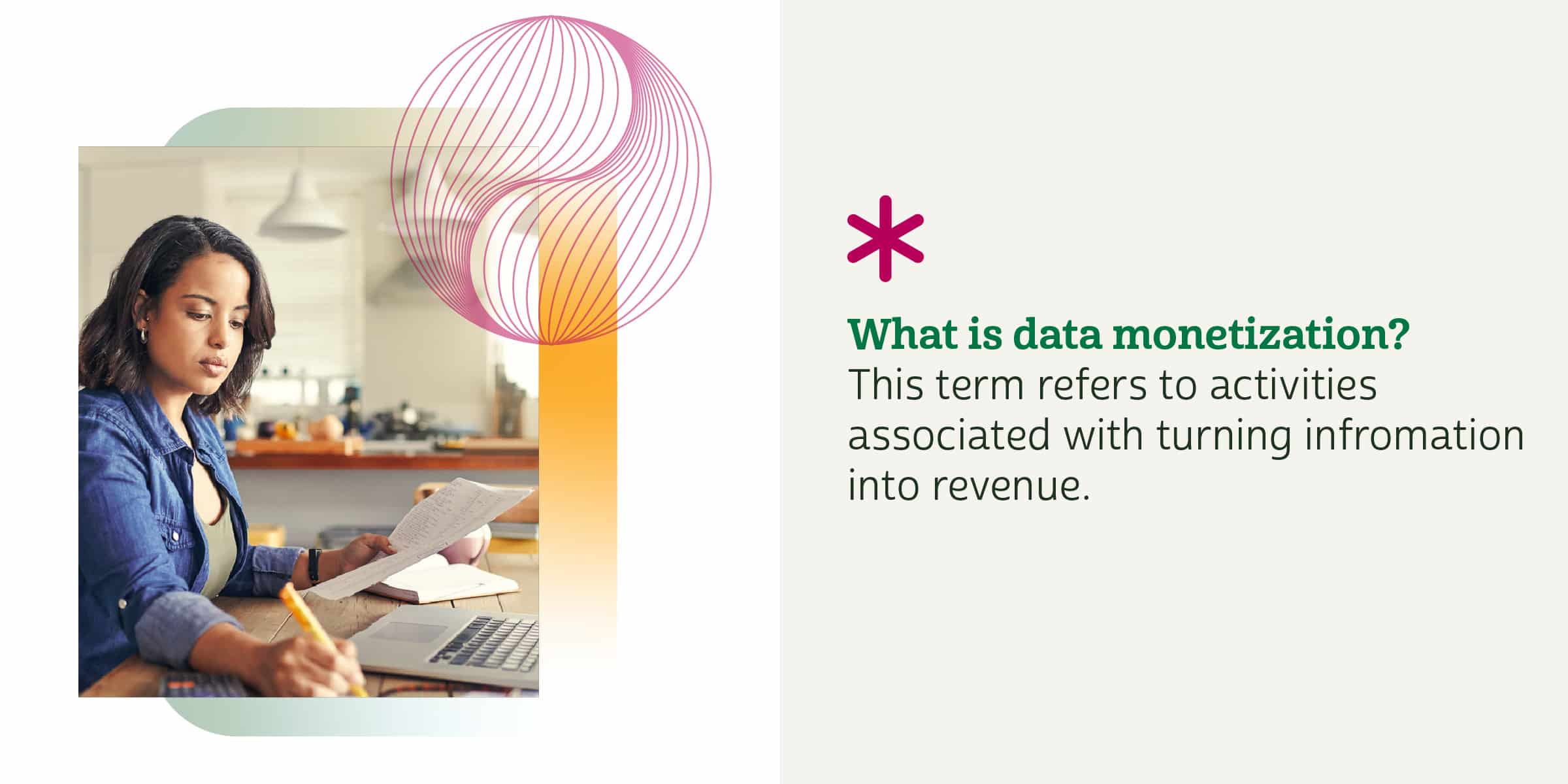
This term refers to activities associated with turning information into revenue. It includes direct forms of monetization, such as selling data, as well as indirect forms, such as using information to improve a marketing campaign and boost sales of a product.
There are many ways that companies today can use data monetization strategies to earn revenue. As technology improves, the amount of available data grows and businesses come up with new ways to monetize their data, the definition of data monetization continues to expand. How will your company turn its business data into revenue?
Why Monetizing Data Grows Your Business
Monetizing data can provide many different benefits. When companies monetize their data, they get the obvious benefit of increased revenue, but they also get other advantages that are less apparent. Let’s take a look at some of those benefits.
1. Increased Revenue
Data monetization directly benefits businesses by increasing their revenue. Directly boosting the bottom line is an obvious benefit for any organization. Companies can earn money from their data by selling it, after taking steps to prepare it for other organizations through data marketplaces. They can also sell insights derived from their data or other data-related products.
2. Valuable Relationships
Selling business data also allows companies to form mutually beneficial relationships with other organizations. When selling data to other organizations either directly or through a second-party data collaboration, you communicate with those organizations, which can begin the relationship. You may find you can continue selling data to that organization in the future or even regularly exchanging data back and forth. In this way, data can help you find lasting business partners.
3. Improved Data Collection
Before you can sell your data, you must take some steps to prepare it. Ensure it is accurate, organized and secure. Set up an efficient means of collecting and organizing your data. Once you do these things, you’ll be able to use your data more effectively internally as well. Because of this, selling your data provides you with revenue directly and also helps you get more out of your data yourself.
4. Improved Data Quality
The ability to make money from your business data may also give your company the motivation it needs to invest more in the quality of your data. If you plan to sell your data, you need to pay close attention to its quality. Checking your data before you sell it may help you catch problems that would otherwise have gone unnoticed and caused issues with your company’s internal operations.
Data Monetization Readiness Assessment
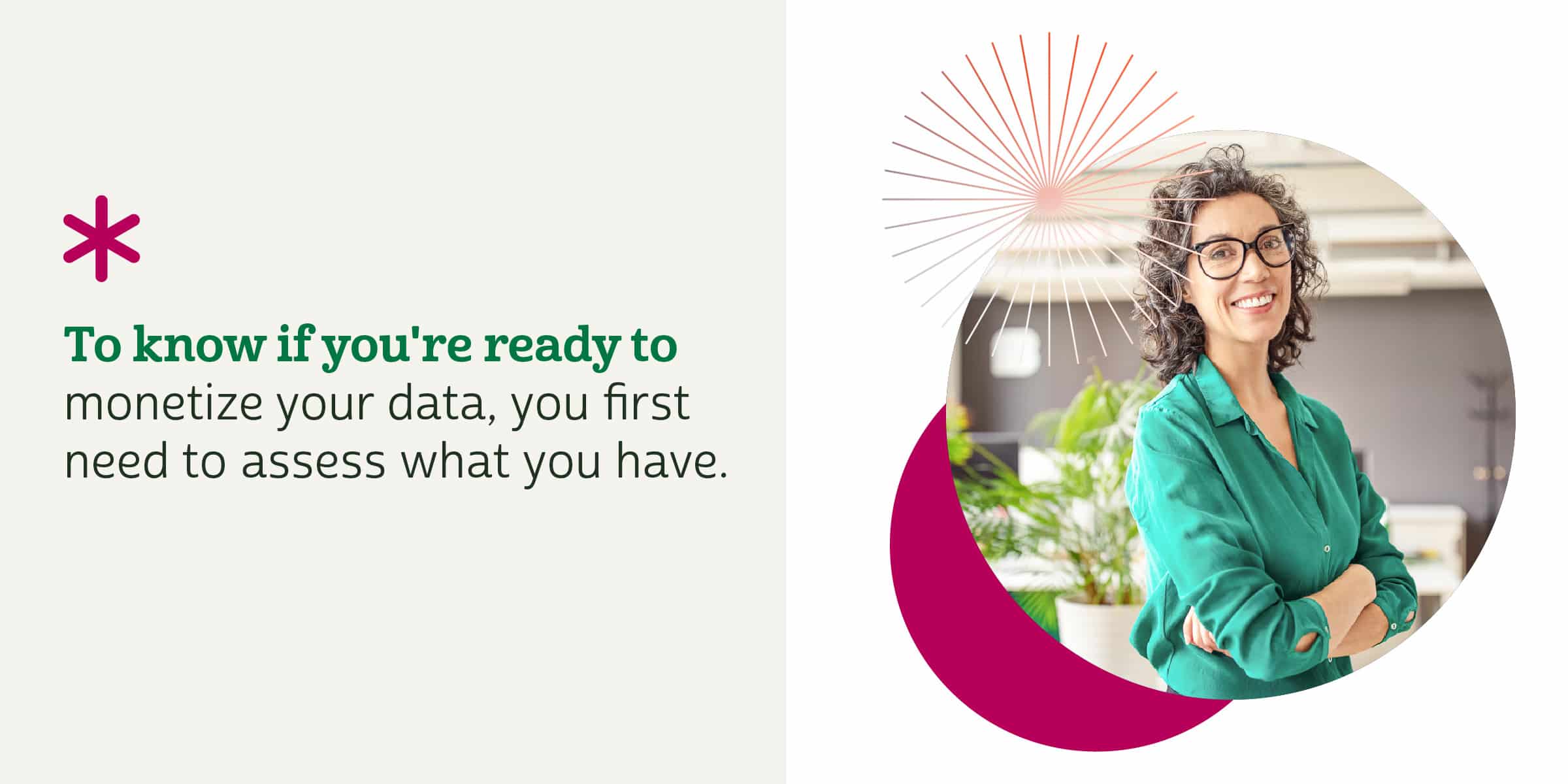
If you already collect data, you could be sitting on a potential goldmine. Your data might also lack value or, more likely, it may not yet be ready for monetization. If you’ve gotten benefits from your data, chances are good someone else will be able to as well.
But to know if you’re ready to monetize, you need to assess what you have. Before you attempt to earn revenue from your information, make sure it is:
- Dependable
- Relevant
- Segmented
- Secure and anonymized, if necessary
Let’s look at each of those four considerations in more detail.
1. Dependable
The first point has to do with data quality. For your data to be valuable, you need to be able to trust its accuracy. You must be able to verify that you gathered your information from a reliable data source and in a manner that didn’t compromise validity. You also need enough data and the right data to have a representative sample — one that you can reasonably assume represents reality.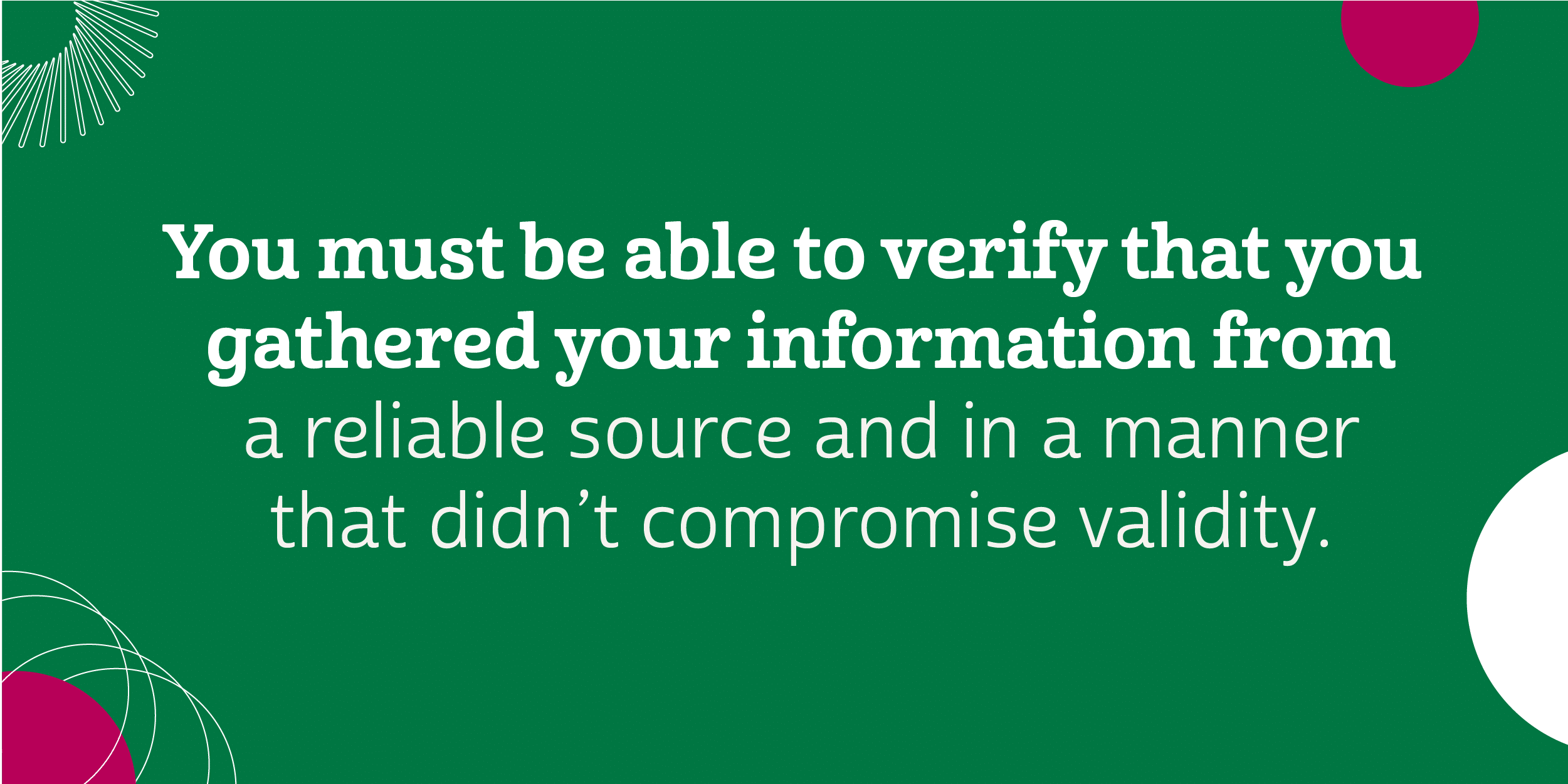
Say, for example, that you own a newspaper website and are considering selling data to local car dealerships. You could survey five readers about their car-buying habits, but that wouldn’t be enough to make any generalizations. To make that customer data valuable, you’d have to survey many more.
On the other hand, you can collect online data from your readers who are active on the “Auto” section of your website. This audience of auto readers would also be valuable to local car dealerships, who would prefer to target that specific audience of your website rather than a more general “spray and pray” advertising strategy.
2. Relevant
For your data to be worth anything to an organization, it has to be relevant to their business needs. Those needs, of course, will vary from company to company. Determining whether information will be useful to a buyer requires you to understand their goals and figure out how your information can help. You should make sure it’s organized and in a format they can use.
Data about whether certain customers are in the market for a new car would be valuable to a car dealership because it allows them to market directly to people who are interested in their products. Other businesses would be less interested in this information because, even if it impacts them indirectly, it wouldn’t lead directly to an increase in sales.
3. Segmented

Segmenting your data refers to organizing it into relevant categories to make it more useful. It’s a way to make sense of your data and it allows you to sell data with a specific purpose in mind as opposed to just as a nebulous chunk of raw data. People want to know what they’re buying, so segmentation will make your data more marketable.
The newspaper publisher could segment their audience into groups based on the types of articles people read and the terms they search for. They could then sell data on the users that read car-related stories to car dealerships through data marketplaces. Although the dealerships wouldn’t know exactly who those readers are, they could send them targeted ads. This segmented data would be much more useful to them than a batch of unfiltered, generic information.
4. Secure and Anonymized
Keeping your data protected helps to preserve its value and, when using customer information, is absolutely vital for privacy and security. Insufficient security can lead to a loss in customer trust and even legal trouble. If the customer data includes personally identifiable information, it carries potentially serious risks.
Because of this, you need to strike the right balance between access and security. In some cases, this might require anonymizing data. Some useful data security tools include: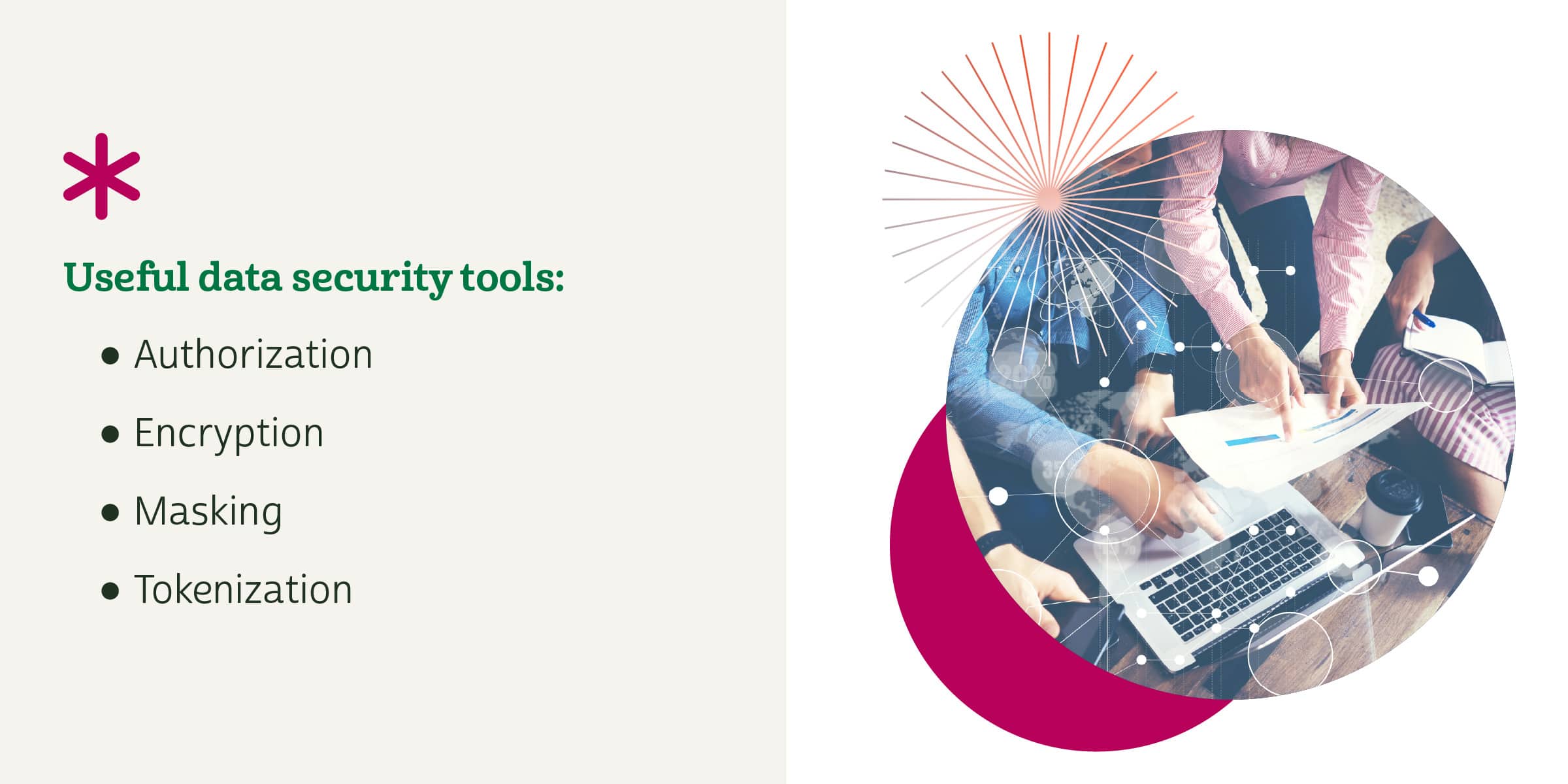
- Authorization: This refers to controlling who can access the data. It prevents unauthorized people from getting to the data but doesn’t obscure it from privileged users who have been allowed access. This is the minimal level of security and may not be enough to meet regulatory requirements in some situations.
- Encryption: Encryption obscures data so it can’t be read if stolen. There are different levels of encryption. You could encrypt data only when it’s stored, keep it encrypted when it’s in transit and accessed by privileged users or keep it encrypted at all times. Generally, the higher the level of security, the longer the data will take to process.
- Masking: Masking replaces the actual numerals of the data while keeping its type and length so that it’s still useful without including sensitive information. You can either mask data permanently or store it in its original form and mask it as necessary.
- Tokenization: Like masking, tokenization replaces the values in the data while preserving certain elements but uses a different process to do so. It keeps the information secured at all times and you have more flexibility in choosing what fields should be tokenized and can even tokenize only parts of fields.
Depending on the type of records you have and how it will be used, you might wish to make sure you also include other aspects before you try to monetize it. These four things, though, are the main features you should always check for.
Enterprise Data Monetization Strategy in 5 Easy Steps
If you’ve assessed your data and determined that you could potentially monetize it, your next step is figuring out how to actually go about creating a sellable data product. This process can be a bit intimidating, so we’ve broken it down into five steps:
- Identify Available Data Sources
- Organize Your Data
- Conduct Research and Analytics
- Set Terms and Prices
- Finalize the Product
Let’s look at each of these steps in more detail.
1. Identify Available Data Sources
Determine what business data you have available as well as what other information you need, if any, to make that data valuable or enhance its value. This step basically involves taking stock of everything you have and how it all relates. You should start thinking at this point about how someone could use this data so you can identify any other information you want to collect to make it more marketable.
2. Organize Your Data
In this step, you’ll need to organize your data into a readily usable form. This requires you to unify, connect, attribute, structure and validate your data, among other things. During this part of the process, your data will start to look like a product that organizations will find practical and want to buy.
This is one area where a data collaboration platform or DCP, like our Spherical platform, can be especially helpful. A DCP will enable you to collect all of your information into one place and organize it as well as prepare it for analyzing and transfer.
3. Conduct Research and Analytics
Next, you’ll want to analyze your data to determine what insights other organizations could potentially get from it.
When you start selling your data, you’ll communicate these benefits to potential buyers to help them understand its potential uses and make it more marketable. These advantages could include insights into customer demographics, interests, preferences and online behaviors, among many other things.
4. Set Terms and Prices
In this step, you will determine how buyers will access the data, how to decide the conditions of any agreement and how your pricing will work. In this step, you should take into account any legal and privacy issues, which you must balance with allowing access and creating value.
You’ll also need to determine how much your data is worth and you’ll price it. Here are the two main types of data product pricing: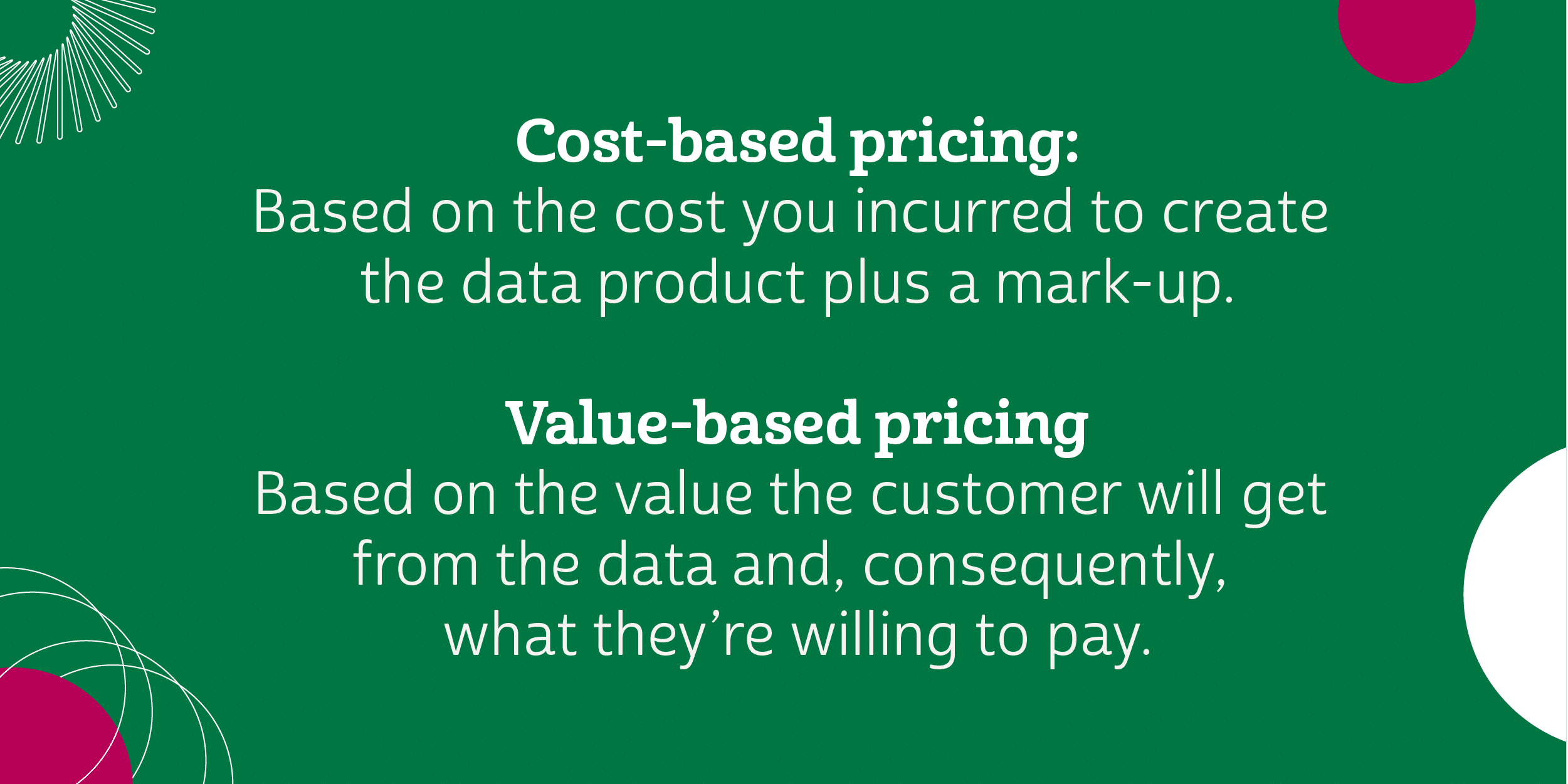
- Cost-based pricing: Based on the cost you incurred to create the data product plus a mark-up.
- Value-based pricing: Based on the value the customer will derive from the data and, consequently, what they’re willing to pay.
Pricing factors to consider include the volume of data, frequency with which you collected the data, the completeness of the data set, the scarcity of the information, its organization, its reliability and how easy it is to analyze.
5. Finalizing the Product
Once you have a thorough understanding of what you have, you can package it into sellable data products and come up with any other related services you could potentially offer, such as real-time updates and analytics help. It’s likely that your product will be gradable and customizable so it can include different data sets based on buyers’ individual needs.
Selling Data: How It’s Done
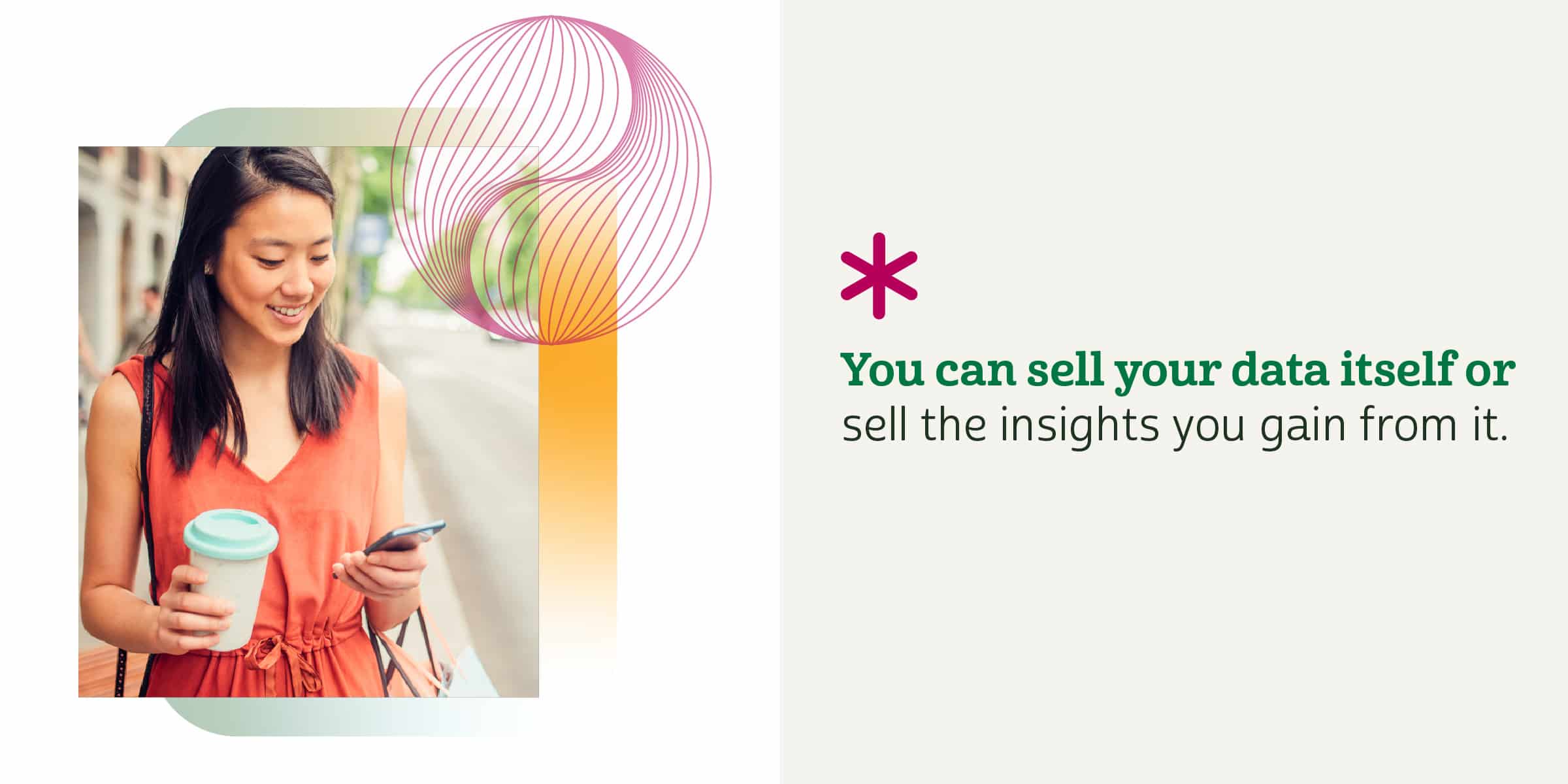
Now that you have your data product, how do you go about selling it? There are several ways you can sell your data, including selling it to another company directly or joining a data marketplace. You can sell your data itself or sell the insights you gain from it.
Sell your data directly
The most straightforward method is to sell your data directly to another organization through a private interaction that either you or the other party sets up. This approach requires you to either already have a relationship with a company that might want to buy your data, or to do some research and find a potential buyer.
Join a private marketplace
You can also join a private data marketplace where companies exchange data. Through Lotame’s Spherical platform you can easily sell your data to high-end buyers in transparent transactions. Our platform offers a steady stream of buyers readily available whom you likely would not have otherwise connected with.
Sell your data to a data aggregator
Another option is to sell your data to a data aggregator or another similar company that will then sell your data to companies that will use it. Going through a third party is an easy way to sell a lot of data fast, but you don’t have as much control over the transaction, and you may not get as favorable of a price. If you decide to go this route, be sure that you do some research to ensure the company you work with is reputable, secure and capable.
You also have several options related to the form in which you sell your data. You can sell the data itself, or you can share insights you gained by analyzing your data. You can sell the results of analyses you already performed or, if you have resources and personnel to do it, offer to use your data to solve specific problems and produce custom insights. One benefit of selling insights rather than data is that you maintain sole control over your data.
5 Data Monetization Examples
In addition to selling data, companies can monetize data by finding ways to use it internally to boost revenue, facilitate growth and reduce expenses. Selling data is only one part of the data monetization picture. Here’s a small selection of the ways publishers, marketers and other companies can use data monetization strategies internally.
1. Build Better Audiences for Advertising
Data can help publishers and media companies and marketers and agencies build better audiences for advertising. You can build better audiences by organizing audience data from across media properties, combining first-party data with second-party and third-party data and analyzing that information to improve your understanding of your audience.
You can use a data collaboration platform to organize your audience data by demographics, purchase history, interests and other categories. Analyzing these segments helps you learn more about them so you can target them more precisely.
For publishers and media companies, improving your audiences means you will be able to sell more ad space to advertisers. For marketers and agencies, it means you can improve the ROI of your campaigns by making your targeting more precise.
For example, if a publisher has an advertiser who sells kitchenware, they could place their ads on the recipes section of their website. If they have an audience of people who are interested in cooking, however, they could target those ads across their website to those specific audience members. This capability enables you to sell ad space to kitchenware companies, even if your site has nothing to do with cooking, food or home goods.
As another example, say you’re a marketer working for a clothing company. You might analyze a segment of young adults who have bought clothing from your company and discover a significant portion of them are interested in extreme sports. You could then feature extreme sports in your ads targeted to young adults to increase their effectiveness.
2. Increase Average CPM
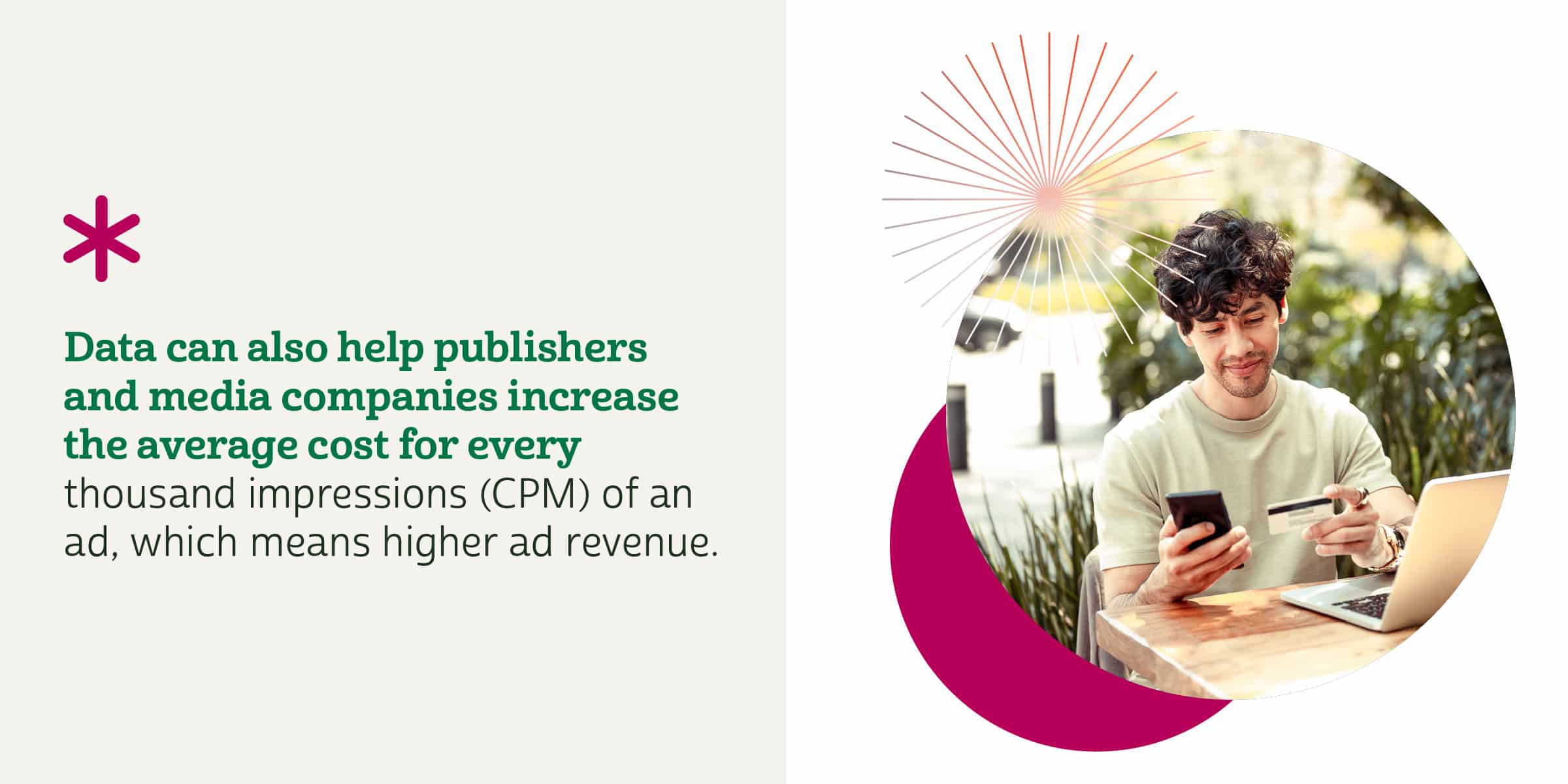
Data can also help publishers and media companies increase the average cost for every thousand impressions (CPM) of an ad, which means higher ad revenue. By segmenting and analyzing your customer data, you can learn more about your audience and offer better targeting options to advertisers. Improved targeting means better results — something advertisers are willing to pay more for.
You can also look back at your past ad data to determine which kinds of ads earned the highest CPMs. You can then focus your efforts on these kinds of ads, boosting your ad revenue. For instance, your data might tell you ads about camping equipment perform particularly well, or that video ads tend to outperform static advertisements.
You may also be able to use data to attract more visitors to your site and keep your existing visitors around longer through content customization, improved content strategies and other means. When you have more site visitors, more people see the ads on your site, which means those ads are more valuable to advertisers.
3. Grow Your Audience
Businesses can also use data to grow their audiences, which can lead to more customers or subscribers and more revenue.
Marketers can use data to develop lookalike audiences to expand their reach. To build a lookalike audience, you take the data you have about your audience’s demographics, interests, preferences and other characteristics, then find new users who have similar characteristics. You might create a segment of your best customers, then use a lookalike modeling tools, like those offered by Lotame’s Spherical platform, to find more similar people to whom you can target ads. Because these potential customers are similar to your existing customers, they’re likely to convert.
Publishers can find new subscribers for their sites using the same approach. They can create lookalike audiences of their current subscribers and then target those users with ads that aim to get them to either visit the site or pay for a subscription.
Companies can also use customer data to boost their sales and grow their customer base. Data technologies allow them to find niche audiences and target them as part of their marketing strategies. They can also use data to upsell their existing customers. For example, if a company knows customers with specific attributes purchased golf clubs on their site, they can target ads to current customers who have those attributes, but have not yet purchased golf clubs.
4. Reduce Remnant Inventory
Another way in which data can help publishers and media companies boost their revenue is by reducing remnant inventory. Publishers and media companies have two types of ad spaces on their sites — premium inventory and remnant inventory. Premium ad space is generally of a higher quality than remnant inventory and is, because of this, worth more. Publishers and media companies typically sell these kinds of ads directly, but they may also sell them programmatically.
Remnant inventory is inventory that’s left after the company has sold all the premium space. This type of inventory doesn’t sell for as high of a price as premium inventory, and it often sells through ad exchanges or networks.
With the help of data, you can convert more of your remnant inventory into premium inventory, allowing you to earn more from ads.
You can accomplish this by using data to drive up the value of your ad space and website by bringing more visitors to your site and improving the audiences you offer to advertisers. These changes increase how much your ad space is worth to advertisers, making it easier to sell and helping you earn more for each ad.
5. Customize Content
You can also use data to customize your content, messaging and advertising to drive improved results. Through data and analytics, you can learn more about your audience and how best to engage with them. You can use information about your customers’ habits, demographics and buying intention to inform triggered and scheduled one-to-one marketing initiatives. Through data analytics techniques, you can better determine the best times to message, upsell and cross-sell customers.
You can also customize ads, emails and other communications for each customer. You can include personalized product recommendations in emails and feature content that focuses on particular customers’ interests in ads targeted to them.
Publishers and media companies can also use customer data to personalize the content they show to each visitor, encouraging them to stay on the site longer and view more ads. Data helps you show visitors the right content at the right times to optimize engagement.
You might gather some of this data directly from visitors through questionnaires. You can also gather information by tracking which types of articles or videos a particular user typically views. Through lookalike modeling, publishers and media companies can even determine which types of articles a new visitor is most likely to enjoy. This personalization leads to an improved customer experience as well as potentially increased ad sales.
Where can I sell business data?
FAQs on Monetizing Data
How do I find buyers for my business data?
How profitable is it to sell business data?
How to verify the authenticity of business data before selling it?
How to ensure the accuracy of business data when selling it?
How can I include data selling in my business model?
Monetize Your Data With Lotame Data Marketplaces
Ready to turn your data into increased revenue? Lotame has the data connectivity solutions you need to sell your data-driven audiences everywhere.
Drive revenue for your high-quality addressable audiences around the world. Powered by identity technology, Lotame data marketplaces provide data sellers with the right tech and activation tools to capture more marketer and agency dollars in direct and programmatic channels. Monetize your valuable data across all browsers, devices and platforms, including CTV and cookieless environments.
CONNECT
Onboard and centralize offline and online data into a single ID. Build and package addressable audiences using data from all available sources.
ANALYZE
Tell a richer story about your audience profiles to drive sales and interest in your data.
ACTIVATE:
Make your packaged audiences available to buy regardless of browser or device via the Lotame Data Exchange or other marketplaces.
Our other data collaboration solutions available in the Spherical platform enable you to make the most of your data internally and use it to give your bottom line a significant boost.
To learn more about how our solutions and expertise can help you monetize your data, fill out the form below, and contact us today.


